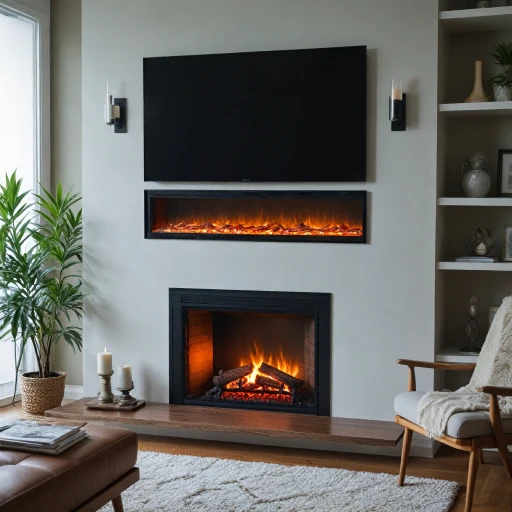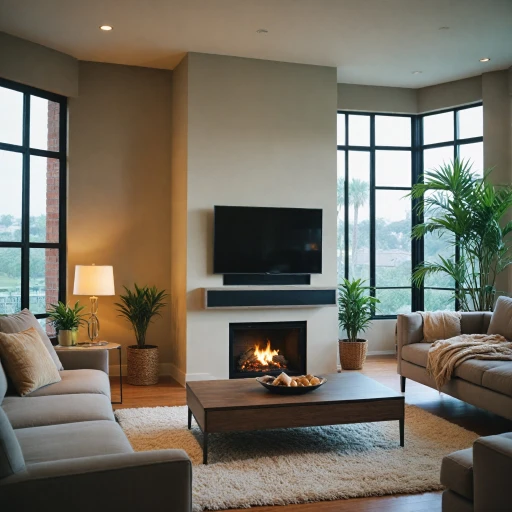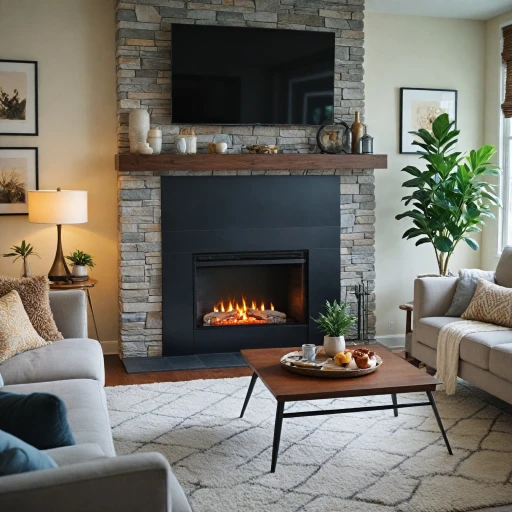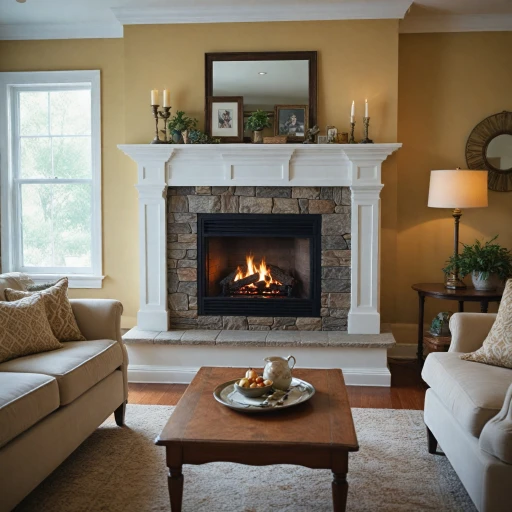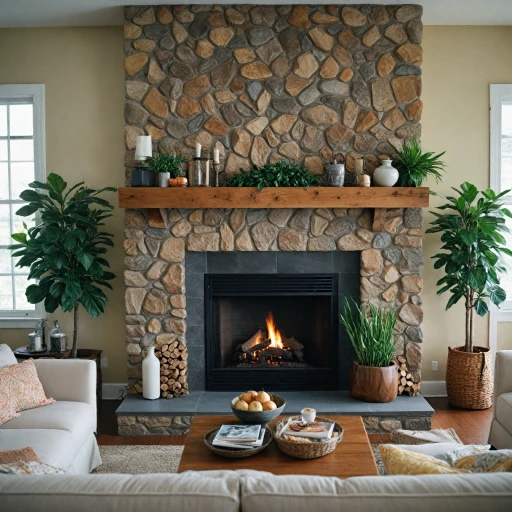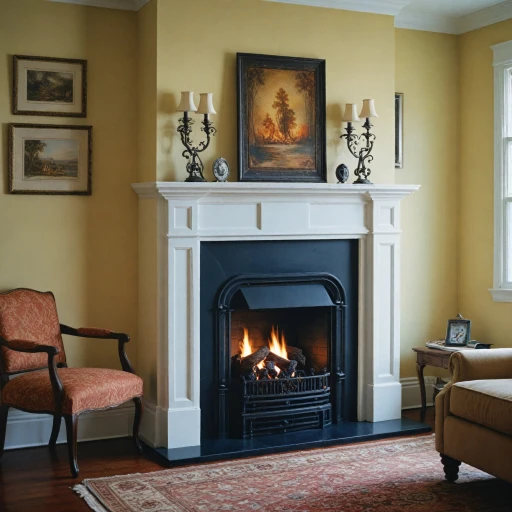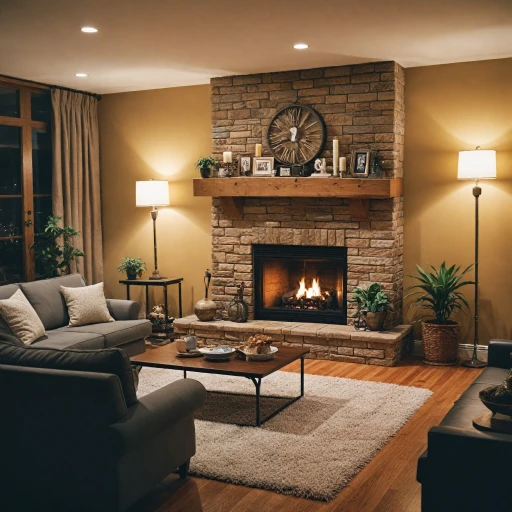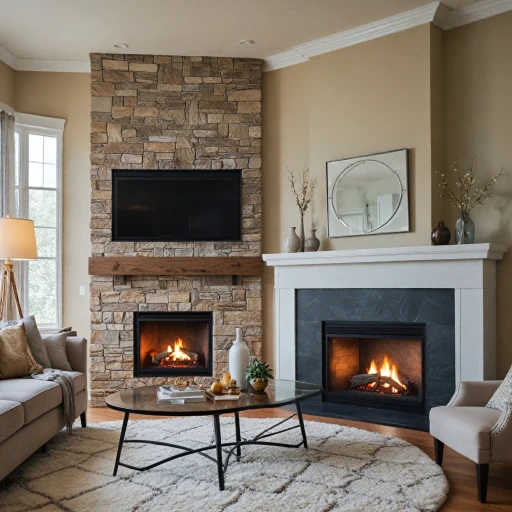
Understanding Gas Fireplaces
The Inner Workings of Gas Fireplaces
Gas fireplaces have become a popular choice for homeowners who crave the warmth and ambiance of a traditional fire without the hassle of maintaining a wood burning fireplace. These fireplaces operate on natural gas or propane, providing a convenient and cost-effective way to heat your home. One great advantage of choosing a gas fireplace is the variety of venting systems available. You can opt for a direct vent system, which safely expels combustion gases through a chimney vent or directly outside through a wall. This setup enhances indoor air quality by keeping harmful substances like carbon monoxide outside where they belong. If you prefer a simpler installation process, a vent free model might be your best bet. These fireplaces don’t require a chimney, making it easier to install them virtually anywhere in your home. However, remember that vent free fireplaces might not be suitable in areas with strict safety regulations. Always check your local codes to confirm compliance. Gas fireplaces offer a clean burning experience with the added benefit of safety features. A common concern about traditional fireplaces is the unpredictable nature of an open flame. Gas inserts come equipped with systems designed to prevent excess gas flow, reducing the risk of accidental fire hazards. Planning for installation can involve considerations around chimney requirements—some setups need none at all. But if they do, rest assured that both indoor and outdoor options are designed with efficiency in mind. For those curious about the technical details, you can explore the key components essential to a gas fireplace's operation.Chimney Requirements for Gas Fireplaces
No Chimney, No Problem?
Gas fireplaces are a popular choice for those who want the cozy appeal of a traditional wood-burning fireplace without the hassle of chopping wood or cleaning ashes. But do they need a chimney? The answer isn't as straightforward as you might think. Many gas fireplaces operate with a venting system, but not all require a full chimney. There are a few key types to consider:- Direct Vent Fireplaces: These models use a sealed combustion system that draws air from outside and expels any gases directly through a sidewall or roof. This makes them highly efficient and safe, as they significantly reduce the risk of carbon monoxide buildup.
- Vent-Free Fireplaces: These are designed to operate without a vent, hence they don't need a chimney at all. Instead, they burn gas in a way that produces very little carbon monoxide. These models are quite flexible, allowing for installation almost anywhere inside your home. However, concerns about air quality and safety can arise, so always ensure they are installed and maintained according to the manufacturer's guidelines.
- Chimney Vent Fireplaces: Traditional chimney vent models still exist, and these require a chimney to expel gases outside your home. This kind, however, is less common given the advances in technology allowing vent-free and direct vent solutions.
Advantages of Electric Fireplaces
Why Electric Fireplaces Stand Out
Electric fireplaces offer a fresh approach in the realm of cozy home heating. Unlike traditional fireplaces, they steer clear of the typical maintenance hurdles associated with wood burning setups. Here's why you might find them an excellent fit for modern living:- Simplicity and Safety: Electric fireplaces eliminate the need for a chimney or venting system. This design not only simplifies installation but also boosts safety by excluding risks like carbon monoxide emissions.
- Straightforward Installation: Forget about complicated setups or needing to install a vent gas system. An electric fireplace just requires a standard power outlet, making it a straightforward choice for various home structures.
- Efficient Heating: You can count on an efficient source of heating without the mess of ash or soot from wood burning fireplaces. Additionally, many models come with thermostats and remote controls for ease of operation.
- Versatile Designs: Whether your flavor is modern or traditional, you'll find a design that suits your taste. Plus, you can even enjoy a fireplace experience outdoors without any air-quality concerns.
Comparing Gas and Electric Fireplaces
The Ultimate Heating Solution: Gas vs. Electric Fireplaces
Gas and electric fireplaces each offer unique benefits, making them appealing choices for homeowners. Let's break down the details so you can make an informed decision.- Installation Flexibility: Electric fireplaces are often the go-to for homes where installation simplicity is a priority. Just plug it into a standard outlet and you're off to the races. In contrast, gas fireplaces might demand a bit more elbow grease during installation, especially with vent systems like direct vent or vent-free models. Some situations require connecting to natural gas lines or ensuring proper chimney venting.
- Efficiency & Operation: Electric fireplaces top the charts in efficiency. Converting almost all electric energy into heat, they warm your space without the need for a chimney. Gas models, especially vent-free options, also offer great heating efficiency, but with some models, you must remain cautious about carbon monoxide risks and proper venting systems, ensuring safety is not compromised.
- Safety Concerns: With electric fireplaces, there's a low risk of carbon monoxide, making them a safer choice for many. Gas fireplaces require vigilance with carbon monoxide detectors and ensuring your venting gas system functions correctly to prevent improper burning.
- Appearance & Aesthetics: In terms of looks, both fireplace types have their charm. Gas fireplaces aim for authentic experiences with real flames, often making them the darling of traditionalists. In contrast, electric options provide a modern twist, allowing customizable flame effects and easy control without burning wood.
- Environmental Considerations: While natural gas is cleaner than burning wood, electric fireplaces proudly stand as an eco-friendlier choice due to their efficient use of electric energy and lack of emissions.
Installation Considerations
Key Factors for Installing a Fireplace
When considering a fireplace for your home, whether gas or electric, a few critical factors come into play. While gas fireplaces typically require a direct vent or vent-free system to manage air, electric fireplaces bypass these ventilation challenges entirely. Here's what you need to know about installing these different fireplace types.- Location and Space Requirements: Gas fireplaces need careful placement due to their venting needs. Direct vent models use outdoor air for combustion and expel fumes outside, requiring access to an external wall or chimney vent. Meanwhile, vent-free models can be placed more flexibly but raise carbon monoxide safety questions. Electric fireplaces offer greater freedom here, as they can be installed anywhere there is an electrical outlet.
- Installation Complexity: Installing a gas fireplace means professional handling of the venting system and gas lines to ensure safe operation. This can escalate costs and timelines, making electric fireplaces appealing for their simple installation. Plug-and-play models make setup easy and quick, a boon for DIY enthusiasts.
- Permits and Regulations: Installing a gas fireplace typically requires adherence to local building codes and may need permits due to the involvement of natural gas and potential hazard of carbon monoxide. Electric fireplaces often skirt these requirements, simplifying the process.
- Operation Efficiency: While gas fireplaces offer excellent heating efficiency with natural gas yet may be less efficient than their wood-burning counterparts. Electric options provide a straightforward and efficient heating experience without the need for venting gas or managing combustible materials.
Choosing the Right Fireplace for Your Home
Finding the Ideal Fireplace for Your Space
When it comes to selecting the right fireplace for your home, there are several factors to consider. Each type of fireplace—whether gas or electric—offers unique benefits and challenges. Let's break down what you need to think about to make the best choice for your living space.
Assessing Your Home's Needs
Start by evaluating the specific needs of your home. Do you have an existing chimney, or would you prefer a vent-free option? Gas fireplaces often require a chimney or a direct vent system, which can impact installation costs and complexity. On the other hand, electric fireplaces offer more flexibility, as they don't need a chimney or venting system, making them easier to install in various locations.
Considering Safety and Efficiency
Safety is paramount when choosing a fireplace. Gas fireplaces, while efficient, require proper venting to prevent carbon monoxide buildup. Electric fireplaces, however, eliminate this concern as they do not produce emissions. Additionally, electric models often boast higher efficiency rates, converting nearly all their energy into heat, unlike wood-burning or gas options that lose heat through venting.
Installation and Operation
Think about the installation process and ongoing operation. Gas fireplaces might need professional installation due to venting requirements, while electric fireplaces are generally more straightforward to set up. Consider how much you're willing to invest in the initial setup and how often you'll use the fireplace. Electric models are typically more cost-effective in terms of both installation and operation.
Personal Preferences and Aesthetics
Your personal style and the aesthetics of your home play a significant role in your decision. Gas fireplaces offer a traditional look with real flames, which can be appealing if you're aiming for a classic ambiance. Electric fireplaces, however, provide a modern touch with customizable flame effects and designs that can fit any decor.
Making the Final Decision
Ultimately, the choice between a gas and electric fireplace depends on your specific needs, budget, and preferences. Consider the advantages of each type, such as the ease of installation and safety of electric fireplaces versus the authentic flame experience of gas models. By weighing these factors, you can select a fireplace that not only enhances your home's comfort but also aligns with your lifestyle.

